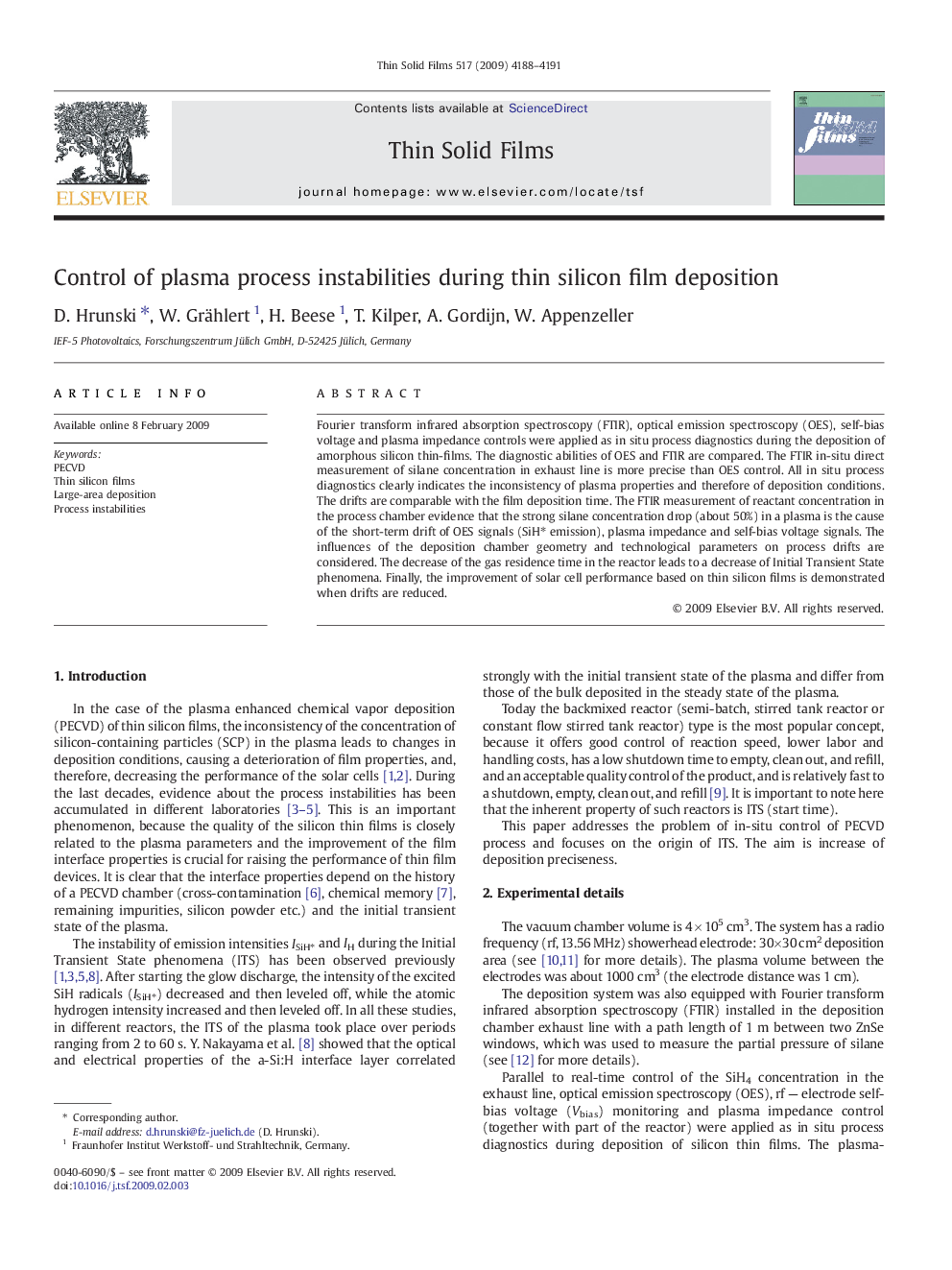| Article ID | Journal | Published Year | Pages | File Type |
|---|---|---|---|---|
| 1669626 | Thin Solid Films | 2009 | 4 Pages |
Fourier transform infrared absorption spectroscopy (FTIR), optical emission spectroscopy (OES), self-bias voltage and plasma impedance controls were applied as in situ process diagnostics during the deposition of amorphous silicon thin-films. The diagnostic abilities of OES and FTIR are compared. The FTIR in-situ direct measurement of silane concentration in exhaust line is more precise than OES control. All in situ process diagnostics clearly indicates the inconsistency of plasma properties and therefore of deposition conditions. The drifts are comparable with the film deposition time. The FTIR measurement of reactant concentration in the process chamber evidence that the strong silane concentration drop (about 50%) in a plasma is the cause of the short-term drift of OES signals (SiH⁎ emission), plasma impedance and self-bias voltage signals. The influences of the deposition chamber geometry and technological parameters on process drifts are considered. The decrease of the gas residence time in the reactor leads to a decrease of Initial Transient State phenomena. Finally, the improvement of solar cell performance based on thin silicon films is demonstrated when drifts are reduced.
